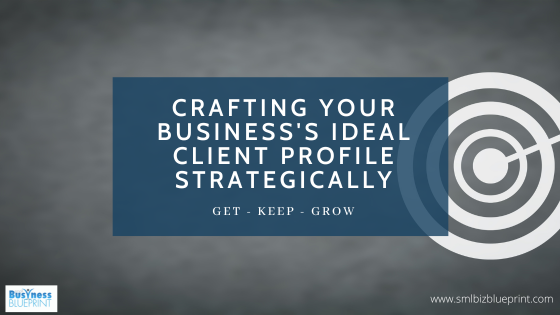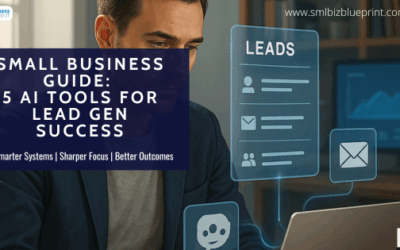Welcome to the business world, where success often results from making the right connections.
One of the crucial keys to thriving in the marketplace is understanding who your ideal clients are.

This comprehensive guide will walk you through determining your Ideal Client Profile (ICP).
Your ICP is not just a buzzword; it’s a powerful tool that can transform your business by aligning your efforts with those clients who are most likely to bring you success.
#1 What Are Your Business Goals?
Your journey to defining your ICP begins with introspection. Take a moment to articulate your business goals clearly.
What do you want to achieve?
Whether expanding your customer base, increasing revenue, or launching a new product, your goals should align with your ICP.
Setting clear objectives that resonate with your ideal clients will pave the way for a more targeted and fruitful business strategy.
#2 What Are Your Core Values?
Think about the values that drive your business.
What principles do you hold dear?
Your ideal clients should share these core values. Clients who align with your values are more likely to become loyal, long-term partners.
When your business and your clients share a common ethical compass, it fosters trust and collaboration, making every interaction more fruitful.
#3 Who Benefits the Most from Your Products or Services?
Not all clients are created equal, and your products or services may have a particular appeal to a specific group.
To define your ICP, identify who benefits the most from what you offer.
Are there industries or individuals that gain the most value from your expertise?
Understanding this can help you tailor your marketing efforts and focus on those who are most likely to become satisfied clients.
#4 What Are the Demographics of Your Ideal Client?
Demographics play a pivotal role in shaping your ICP.
Consider factors such as age, gender, location, and income levels.
By analysing demographic data, you can target your marketing campaigns with laser precision.
For instance, if you run a luxury fashion brand, knowing that your ideal clients are high-income individuals with a taste for luxury goods will guide your advertising choices.

#5 What Are Their Pain Points and Challenges?
Successful businesses are those that solve problems.
Your ideal clients have specific pain points and challenges; your role is to address them.
Dive deep into understanding what keeps them up at night.
Are they struggling with inefficient processes, financial constraints, or a lack of innovative solutions?
Tailoring your approach to address these issues positions you as a valuable solution provider.
#6 Where Do Your Ideal Clients Hang Out Online and Offline?
Knowing where your ideal clients spend their time is crucial for effective outreach.
Do they frequent specific online forums or social media platforms?
Are they active members of industry associations or attend specific conferences?
Understanding their preferred hangouts allows you to optimise your marketing strategy and network with them more effectively.
#7 Who Are Your Most Profitable Clients?
Profitability is a key metric in identifying your ideal clients.
Look at your current client base and identify those who bring in the most revenue.
These clients are often indicative of the type of clients you should target.
You can significantly boost your bottom line by focusing on acquiring and retaining similar clients.
#8 How Do Your Ideal Clients Make Decisions?
Understanding the decision-making process of your ideal clients is essential.
Are they data-driven and analytical, or do they rely heavily on personal relationships and referrals?
Tailor your approach to align with their decision-making style.
If your clients prefer a consultative sales approach, ensure your team can provide it.

#9 What Sets Your Ideal Clients Apart from Others?
Your ideal clients possess unique characteristics that set them apart from the rest.
Whether it’s their innovative spirit, commitment to sustainability, or willingness to invest in cutting-edge solutions, identifying these traits can help you target them more effectively.
Leverage these distinctions to craft compelling marketing messages that resonate with their values and objectives.
#10 Have You Conducted Surveys or Gathered Feedback?
Direct feedback from your current clients is invaluable.
Conduct surveys, interviews, or feedback sessions to gain insights into what your clients appreciate most about your business.
Use this feedback to refine your ICP further.
Real-world input from your existing clients can provide valuable nuances that data alone may not capture.
Framework:
Use this framework to clarify who your ideal clients are:
Who do I want to buy from me?
What must happen to cause them to buy?
What must happen to keep them coming back?
What could happen to cause them not to buy?
Conclusion
Defining your Ideal Client Profile is not a one-time task; it’s an ongoing process that evolves with your business.
By asking these questions and diligently analysing the answers, you can uncover the blueprint for your ideal client.
Remember, your ICP is not just a theoretical exercise; it’s a practical guide to optimising your marketing efforts and building lasting, mutually beneficial relationships.

FAQs
Q1. What is an Ideal Client Profile (ICP)?
A: An ICP is a detailed description of your ideal client, encompassing their demographics, values, pain points, and more. It helps businesses focus their marketing efforts on the most promising prospects.
Q2. Why is it important to align business goals with the ICP?
A: Aligning business goals with your ICP ensures that your efforts are directed towards clients most likely to help you achieve those goals, making your strategy more effective and efficient.
Q3. How can I identify my ideal client’s pain points?
A: Conduct surveys, interviews, or market research to identify common pain points among your target audience. Listening to their needs and challenges is key.
Q4. Can an ICP change over time?
A: Yes, an ICP can evolve as your business grows and market conditions change. Regularly review and adjust your ICP to stay aligned with your target audience.
Q5. What if my business has multiple ideal client profiles?
A: If your business serves multiple segments, create separate ICPs for each. Tailor your marketing and sales strategies accordingly for a more precise approach.
Q6. How do I use my ICP in marketing campaigns?
A: Use your ICP to craft personalised marketing messages, choose the right advertising channels, and target your campaigns to reach your ideal clients effectively.
Q7. What’s the next step after defining my ICP?
A: After defining your ICP, implement a targeted marketing strategy, create compelling content, and focus your sales efforts on attracting and retaining your ideal clients.
Ready to Discover Your Ideal Clients?
Now that you’ve uncovered the key questions to ask when determining your Ideal Client Profile, it’s time to implement this knowledge.
Refining your understanding of your ideal clients will unlock the potential for more meaningful connections and increased business success.
Turn your ideal clients into your most loyal partners.




